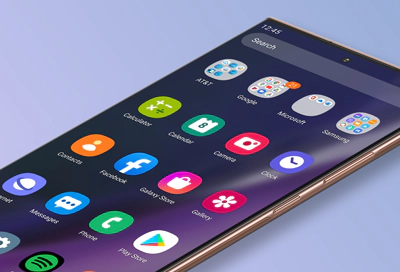A Guide to Managing Pre-Installed Samsung Apps

When you purchase a new Samsung smartphone, you’ll find that it comes with a range of pre-installed apps. While some of these apps can be useful, others may not align with your preferences or needs. Managing these pre-installed apps can help you optimize your device’s performance, free up storage space, and personalize your smartphone experience. In this guide, we will explore various methods to manage pre-installed Samsung apps effectively.
1. Identify Essential Apps
The first step in managing pre-installed Samsung apps is to identify the essential ones that you use regularly. These apps are typically core system apps that are necessary for the smooth functioning of your device. Examples include the Phone app, Contacts, Messages, and Settings. It’s important to keep these apps as they are integral to the overall user experience.
2. Evaluate App Usage
Next, evaluate the usage of the remaining pre-installed apps. Go through each app and determine whether you use it frequently or not. If you find that you rarely or never use a particular app, it may be a good candidate for removal.
For example, if you prefer using a third-party email app instead of the pre-installed Samsung Email app, you can safely uninstall it. Similarly, if you have a preferred browser, you can remove the Samsung Internet app.
3. Disable Unwanted Apps
If you come across pre-installed apps that you don’t use but cannot uninstall, you can disable them. Disabling an app essentially hides it from your app drawer and prevents it from running in the background. This action can help free up system resources and improve overall performance.
To disable an app on Samsung devices running Android 9 or later, follow these steps:
- Go to “Settings” on your device.
- Select “Apps.”
- Tap on the app you want to disable.
- Click on the “Disable” button.
Keep in mind that disabling certain apps may affect the functionality of other apps or features that rely on them. Therefore, it’s essential to exercise caution and only disable apps that you are certain you won’t need.
4. Clear App Cache and Data
Over time, pre-installed apps can accumulate a significant amount of cache and data, which can consume valuable storage space. Clearing the cache and data of these apps can help free up storage and potentially improve their performance.
To clear the cache and data of a pre-installed app on Samsung devices, follow these steps:
- Go to “Settings” on your device.
- Select “Apps.”
- Tap on the app you want to clear cache and data for.
- Click on the “Storage” option.
- Choose “Clear Cache” and “Clear Data.”
Be cautious when clearing data, as it will reset the app to its default settings and remove any personalized data associated with it.
5. Update Apps Regularly
Keeping your pre-installed apps up to date is crucial for security, bug fixes, and performance improvements. Samsung regularly releases updates for its pre-installed apps through the Galaxy Store or the Google Play Store. Make sure to check for updates regularly and install them to ensure you have the latest versions of these apps.
Summary
Managing pre-installed Samsung apps can significantly enhance your smartphone experience. By identifying essential apps, evaluating usage, disabling unwanted apps, clearing cache and data, and updating regularly, you can optimize your device’s performance, free up storage space, and personalize your smartphone to suit your needs.
Remember, while it’s essential to manage pre-installed apps, be cautious not to remove or disable critical system apps that are necessary for the proper functioning of your device. With a little effort and regular maintenance, you can create a streamlined and personalized smartphone experience.




